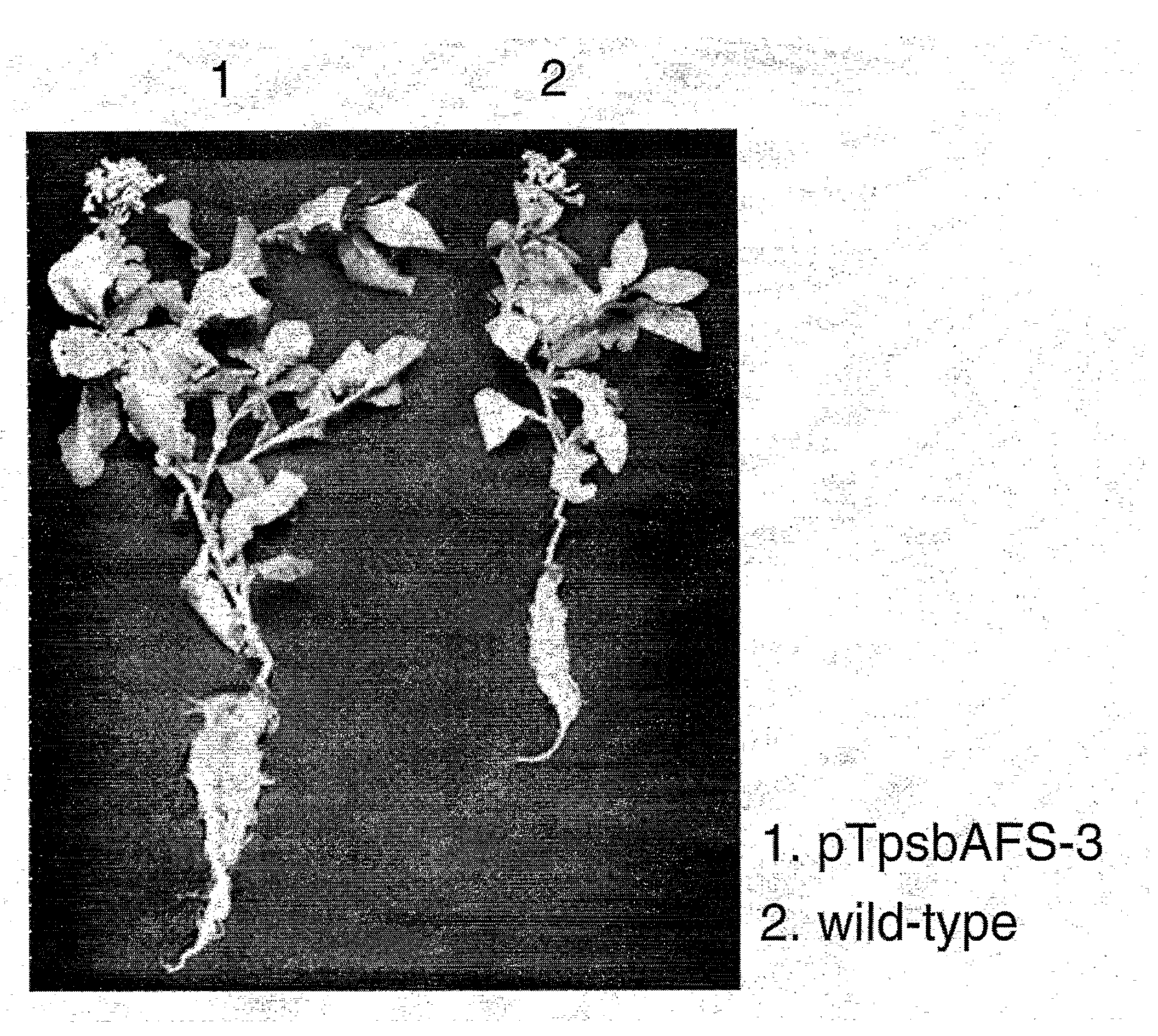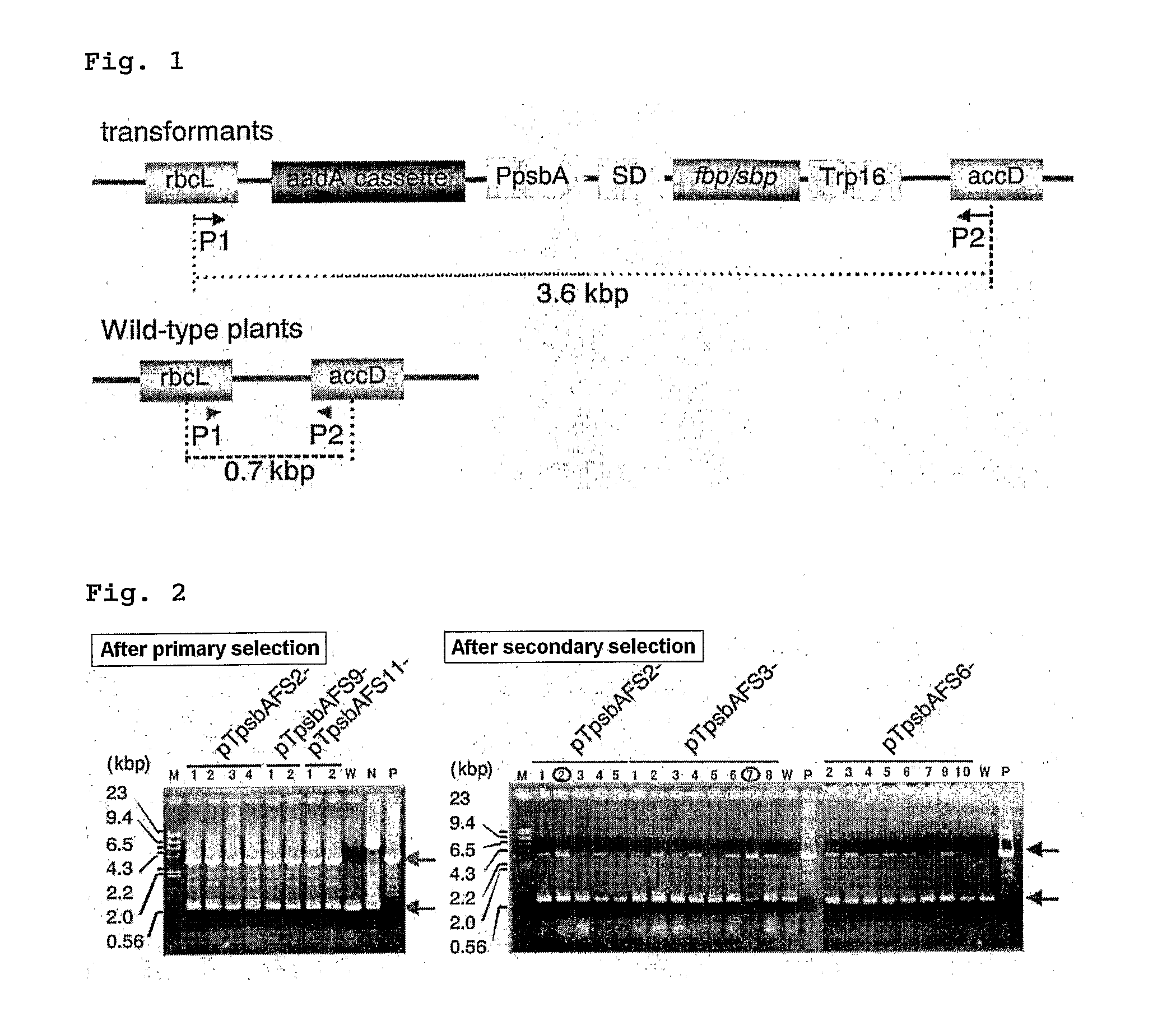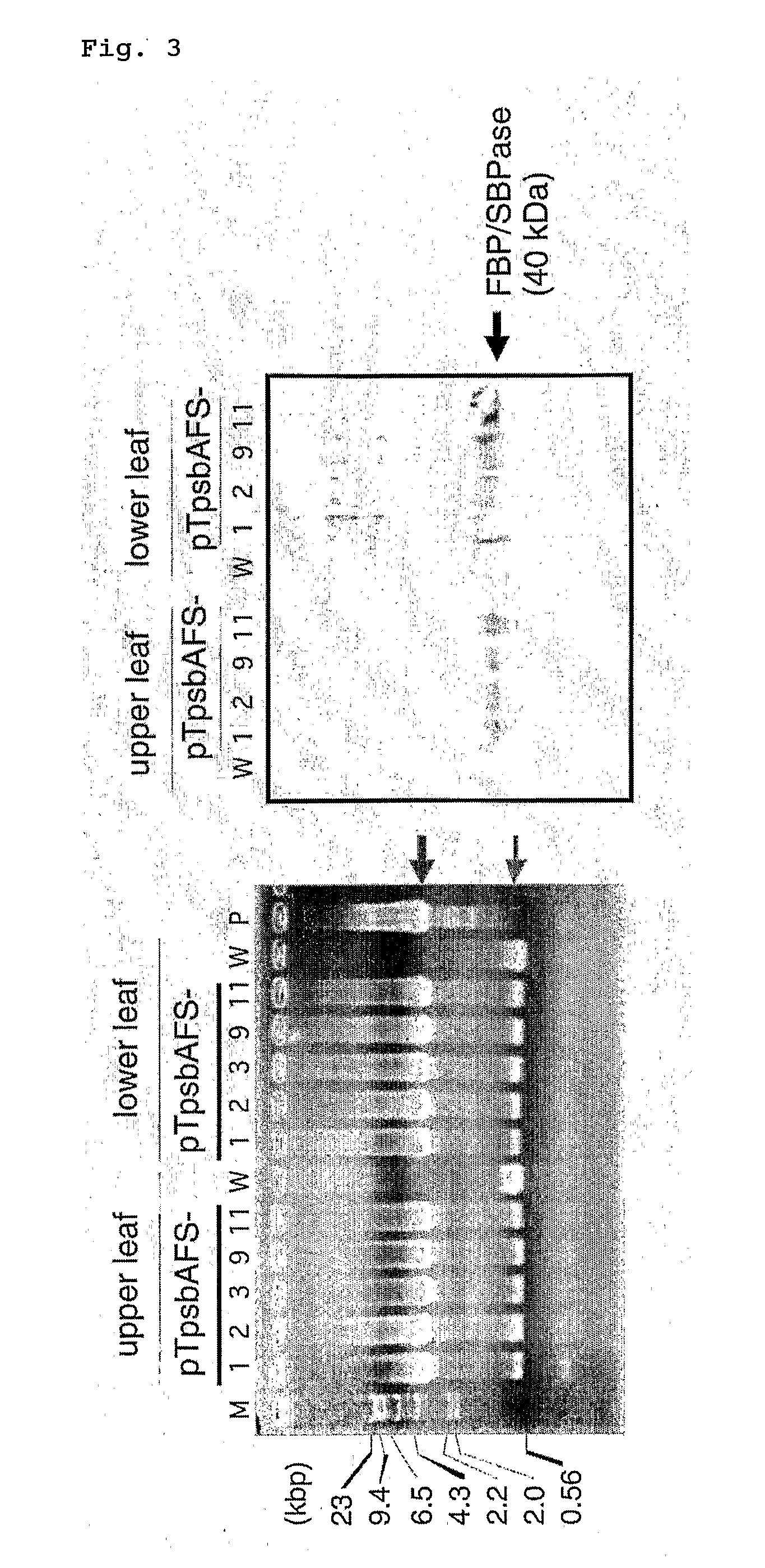Method For Improving Productivity of Plant By Chloroplast Technology
- Summary
- Abstract
- Description
- Claims
- Application Information
AI Technical Summary
Benefits of technology
Problems solved by technology
Method used
Image
Examples
example
Preparation of Recombinant Gene
[0105][Step 1] Preparation of pLD6-S.7942FBP / SBPase
[0106]A S.7942FBP / SBPase gene (fbp / sbp) represented by SEQ ID NO: 2 of Sequence Listing was inserted between restriction enzymes SphI and EcoRI sites of a vector pLD6 having the psbA promoter (PpsbA) by which high expression can be expected in tobacco chloroplasts, to prepare pLD6-S.7942FBP / SBPase. This pLD6-S.7942FBP / SBPase was introduced into Escherichia coli according to a conventional method. This Escherichia coli was cultured at 37° C. for 16 hours in LB medium supplemented with spectinomycin to select the Escherichia coli in which such gene was introduced. The selected Escherichia coli was cultured under the similar condition, cells were collected by centrifugation, and pLD6-S.7942FBP / SBPase (plasmid DNA) was purified by a conventional method. The LB medium includes 10 g of tryptone, 5 g of yeast extract, and 5 g of NaCl per liter. [Step 2] Preparation of pLD200-S.7942FBP / SBPase
[0107]The pLD6-S.7...
PUM
| Property | Measurement | Unit |
|---|---|---|
| Fraction | aaaaa | aaaaa |
Abstract
Description
Claims
Application Information
 Login to View More
Login to View More - R&D
- Intellectual Property
- Life Sciences
- Materials
- Tech Scout
- Unparalleled Data Quality
- Higher Quality Content
- 60% Fewer Hallucinations
Browse by: Latest US Patents, China's latest patents, Technical Efficacy Thesaurus, Application Domain, Technology Topic, Popular Technical Reports.
© 2025 PatSnap. All rights reserved.Legal|Privacy policy|Modern Slavery Act Transparency Statement|Sitemap|About US| Contact US: help@patsnap.com



